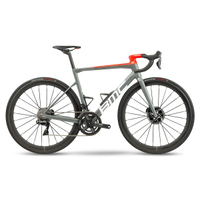Cyclingnews Verdict
A seriously capable lightweight-aero race bike with all the modern cues and price tag to match, only let down by a lack of power meter
Pros
- +
Smooth yet precise handling
- +
Low weight (7.2kg - bottle cages, no pedals)
Cons
- -
No power meter
- -
Restricted handlebar choice
You can trust Cyclingnews
This edition of the BMC Teammachine SLR was launched in July 2020, in the midst of the flurry of new bike launches that mark the height of summer every year. With it, BMC scored a proverbial full house in the game of new bike buzzword bingo, claiming this lightweight aero bike was lighter, faster, stiffer and more compliant than ever before.
It clearly retained the DNA of its forebear but BMC reckoned that every surface throughout had been given some semblance of change.
The most talked-about of these changes was the cockpit, but other notable additions included neat-looking dropouts on the fork and frame - known as Stealth Dropouts - the inclusion of the Aerocore bottle cage design found on the Timemachine Road.
The Teammachine SLR is just one of a large crop of racy rouleurs launched in the past few years, meaning it goes up against bikes like the Specialized Tarmac, the Cannondale SuperSix Evo, Trek's Emonda and Scott's Addict RC, to name a few.
In recent years, bike buyers were met with a choice of aero versus lightweight, but this newly formed category sees the two meet somewhere in the middle and offer similar wind tunnel performance whilst still hovering around the UCI weight limit of 6.8kg. As the two ends of the race bike spectrum begin to converge, how does the BMC Teammachine SLR01 compare to the best road bikes in this hyper-competitive space?
Design and aesthetic
For this particular model, BMC has used its top-tier '01' Premium Carbon tubing for the frame and fork which is tuned using TCC (Tuned Compliance Concept) to improve comfort. However, rather than the TCC Speed applied to the BMC Timemachine Road, this model sees the TCC Race, which results in lower mass and a little more small-bump absorption.
BMC claims that a 54cm frame weighs just 820 grams. For reference, Specialized claims 800g for a 56cm Tarmac SL7, while Trek pits the Emonda at 700g. On paper, it's slightly heavier, then, but it's in the hardly-noticeable ballpark once on the road. Our 58cm test bike tipped the scales at a suitably competitive 7.2kg, without pedals, but with the two Aerocore bottle cages fitted.
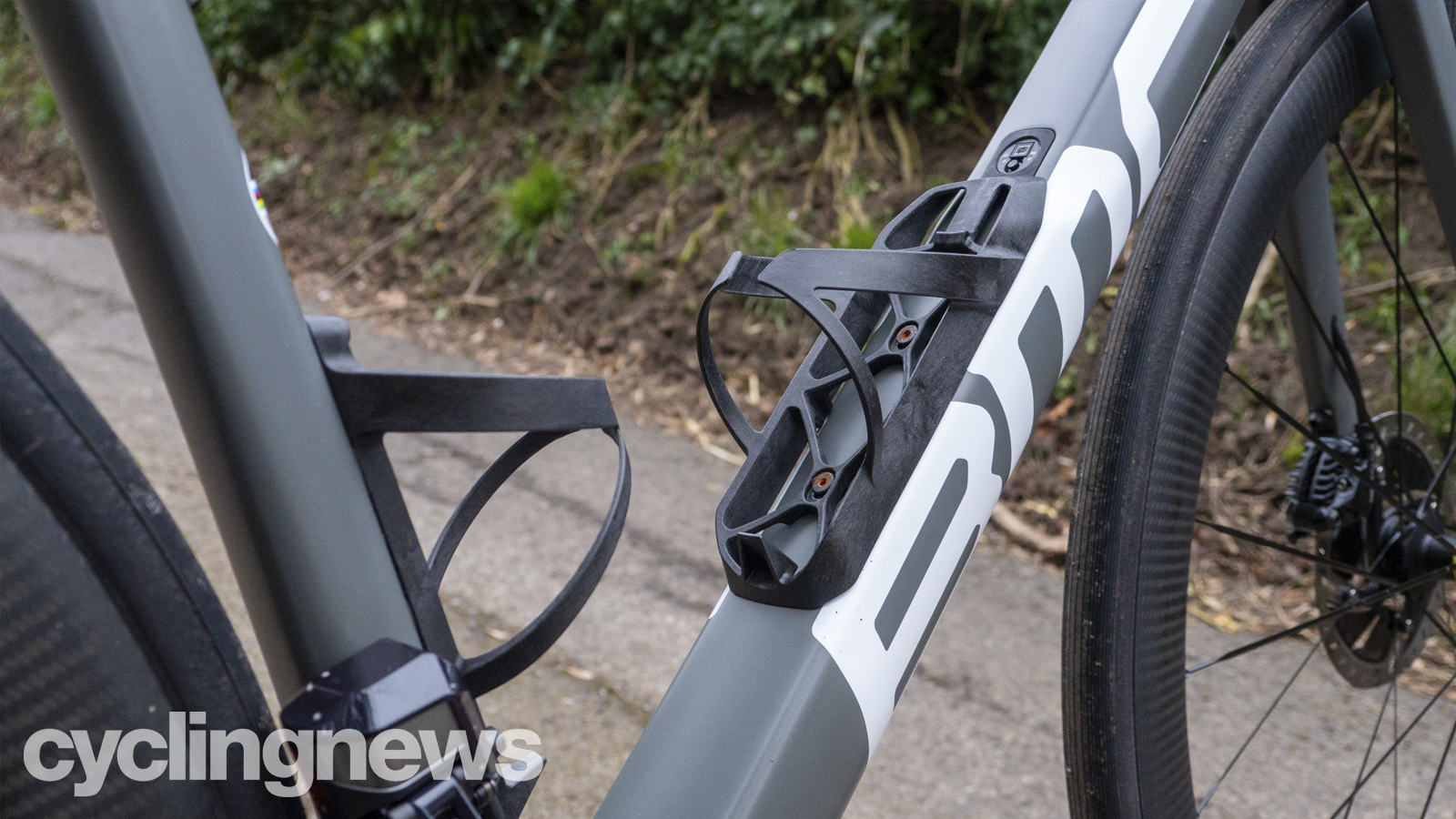
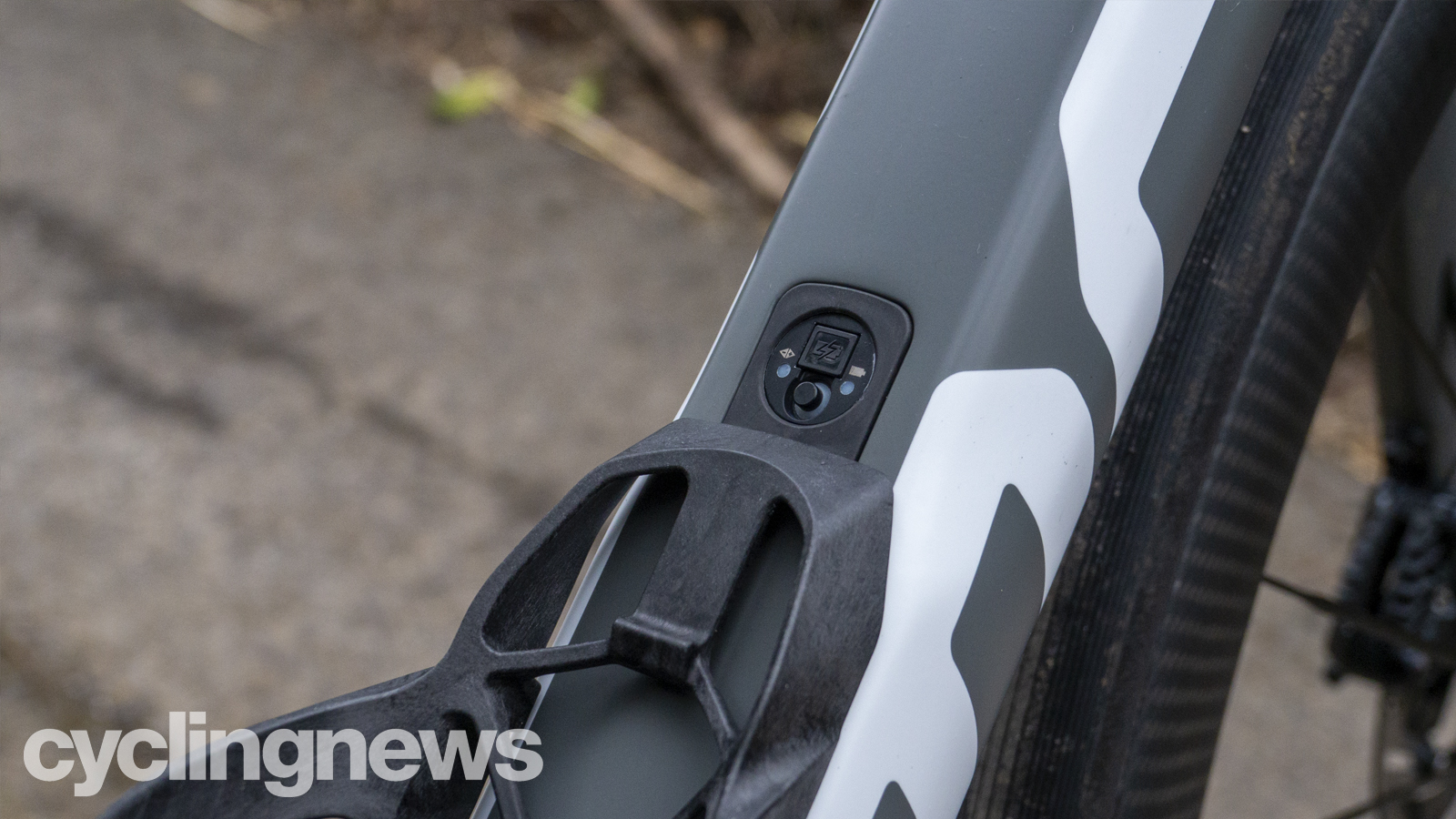
Those bottle cages are a design borrowed from the brand's Timemachine Road aero bike and represent just one of many changes that BMC made to the Teammachine SLR in the pursuit of aero.
The most talked-about of these go-faster tricks is the all-new ICS Carbon cockpit, which saw a complete overhaul from the two-piece ICS to a one-piece system that hides cables completely within in order to promote better aerodynamics and a cleaner aesthetic. As with any integrated cockpit, however, if you want to swap it out, you'll also need to disconnect your brakes and gears, making for a slightly more laborious task. Likewise, the same applies when it comes time to service your headset.
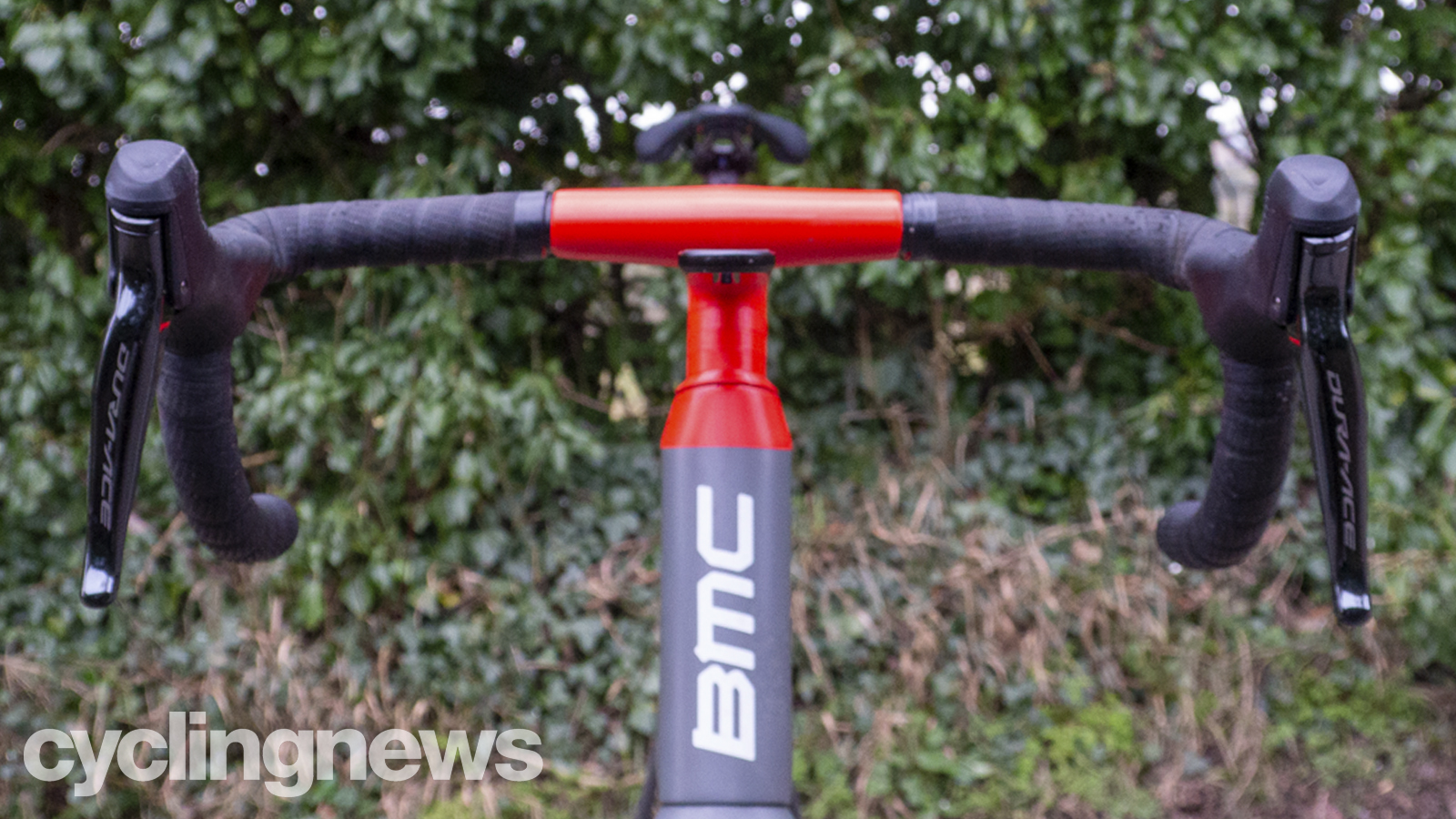
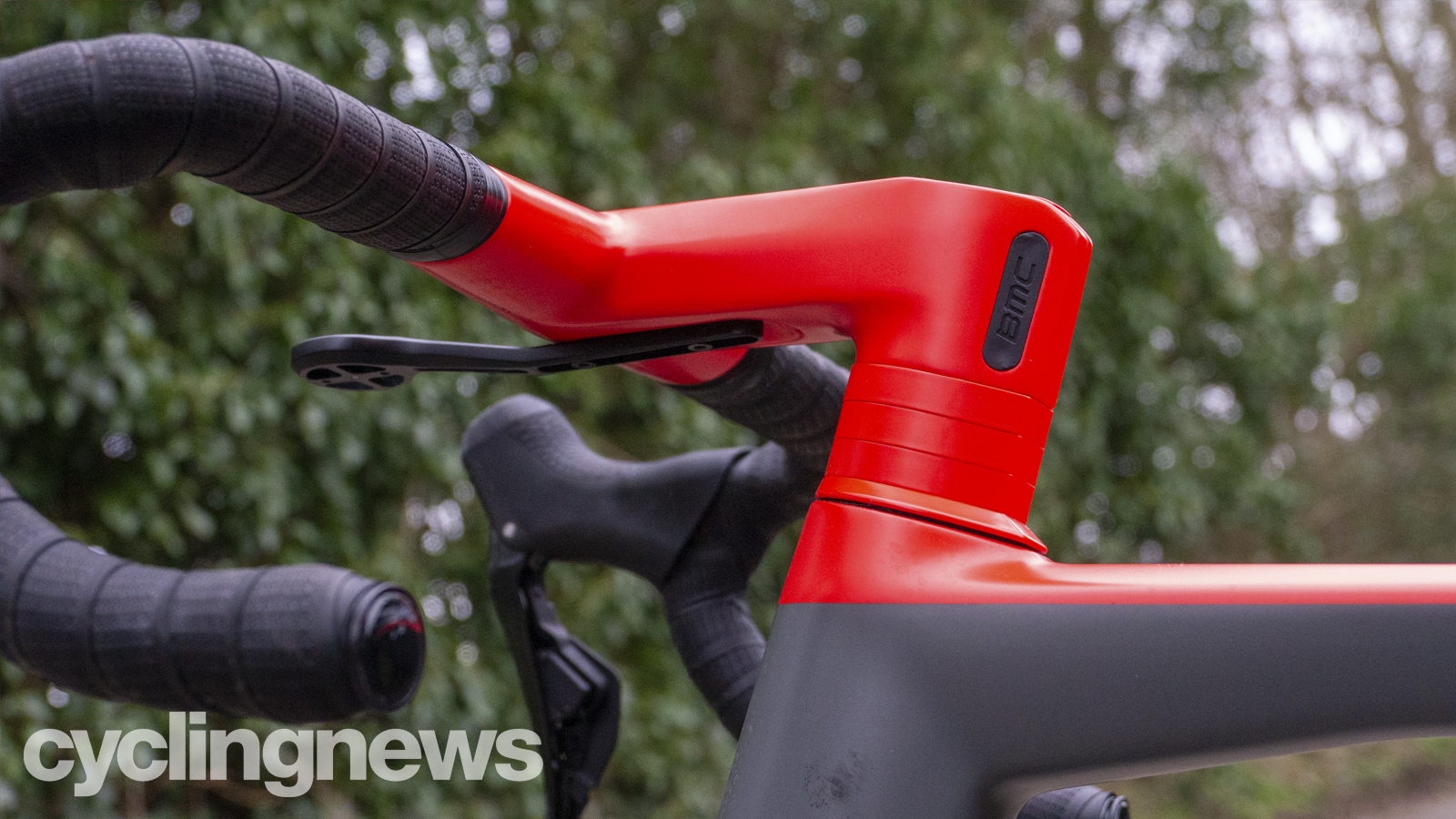
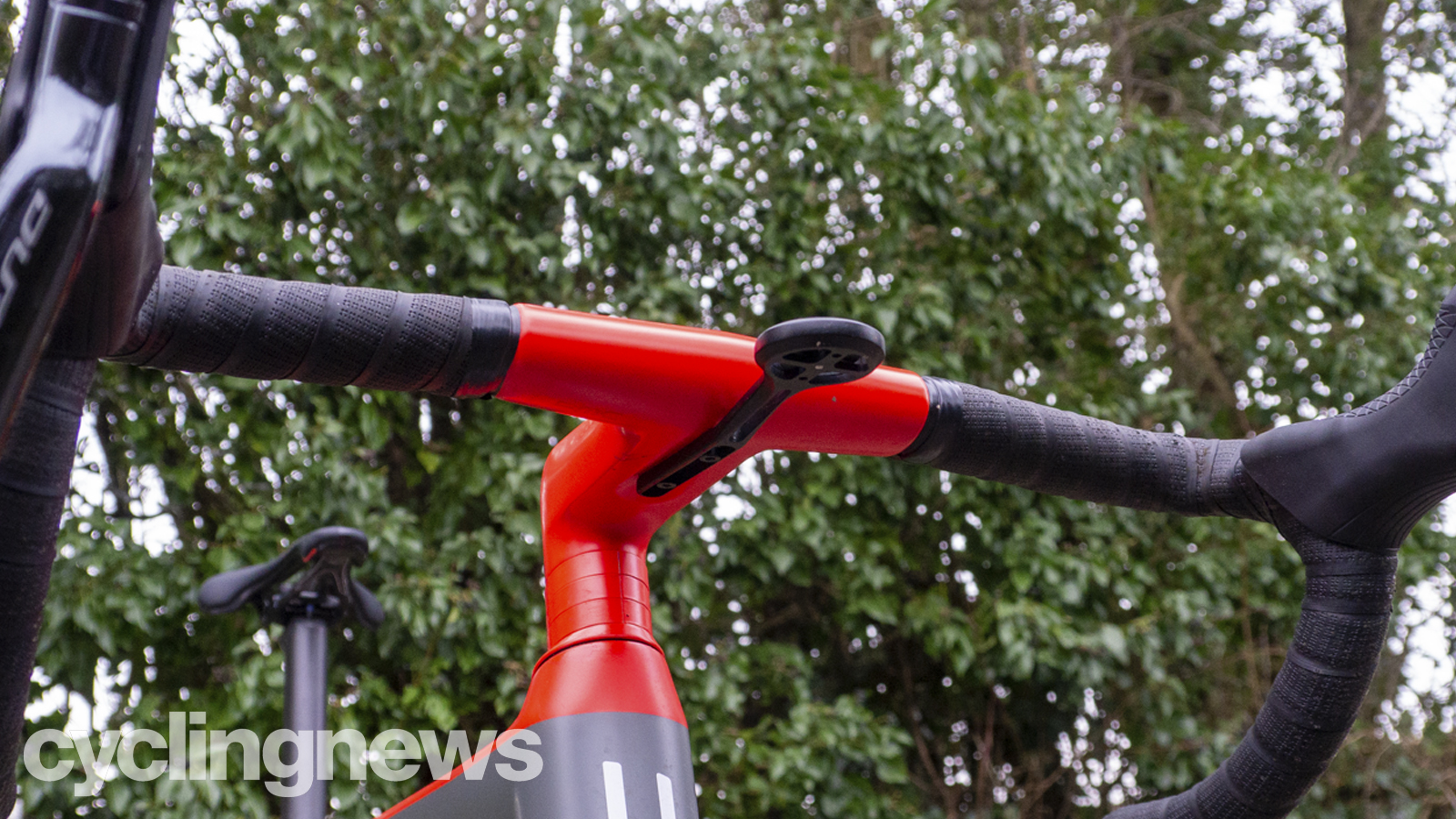
The split spacers do make it a little easier to adjust your fit, but the one-piece system means you can't adjust the angle, and you are restricted to BMC's ICS system should you wish to change size, from which your options are limited to a single angle of -12.5 degrees, two widths of 40 or 42cm, and six lengths of 90 to 140mm in 10mm increments.
South of the cockpit, the fork blades also saw an overhaul to aid with aerodynamics, with flattened edges and a truncated rear, but more notably, they were given what BMC calls 'stealth dropouts', which hide a captive nut into the fork (and frame, at the rear) which allows for a sleek aesthetic.
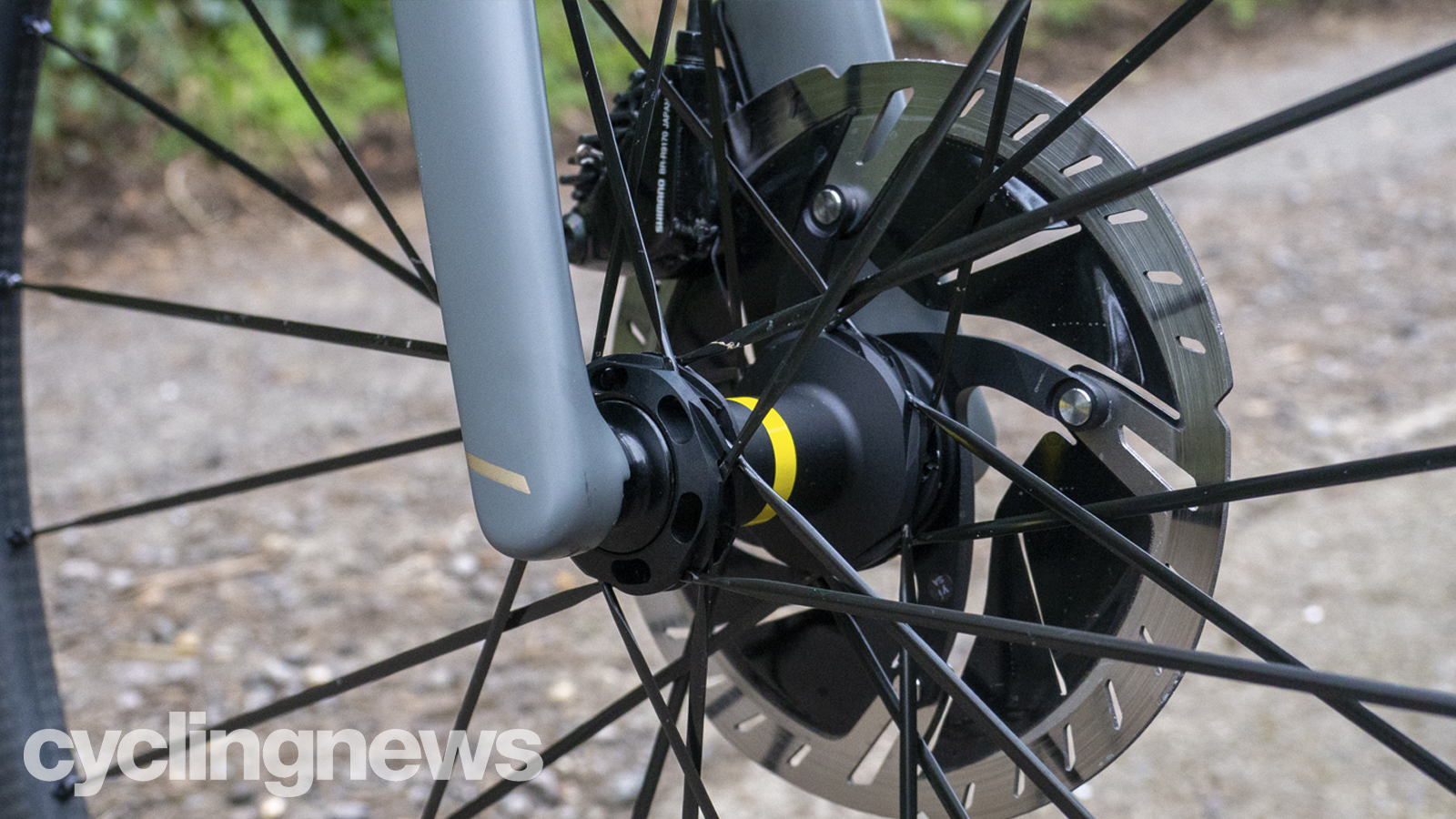
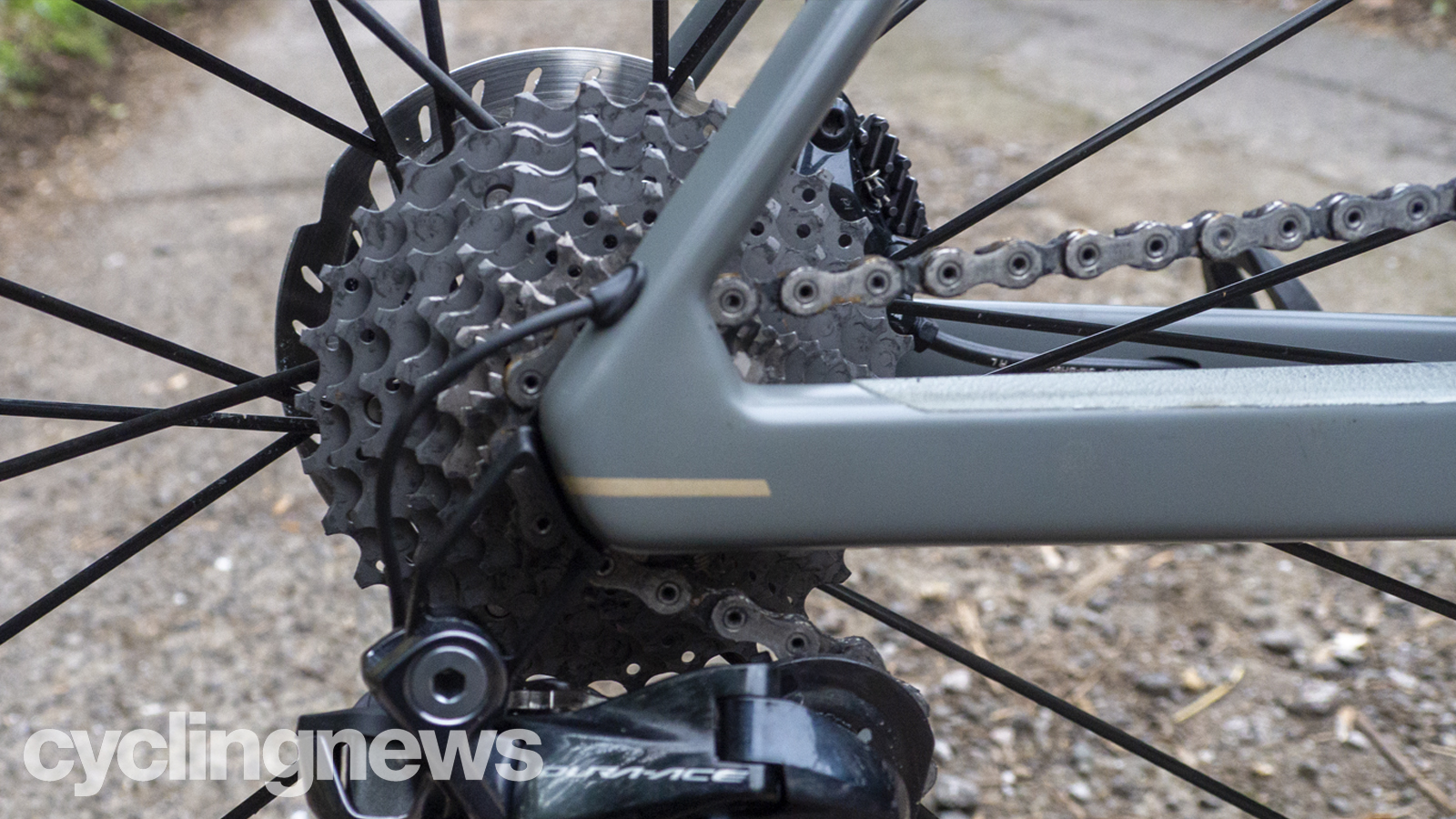
The seat tube and seatpost also feature the truncated tubing that's become a staple part of modern bike design. The D-shape is popular with engineers because it offers nearly the same aerodynamic properties as a full teardrop shape, with the reduction in surface area meaning lower weight and the flat-back profile promoting increased compliance, too. A bit of a win-win-win. This, coupled with the dropped seat stays is a concept that BMC was at the forefront of, and its result is that the comfort offered by the 2021 model is exemplary, especially when you consider its equally impressive levels of power transfer. That's with 25mm Vittoria Corsa tyres fitted, but if you wanted more, the bike is able to handle tyres up to 30mm in width - up from 28 on the previous model.
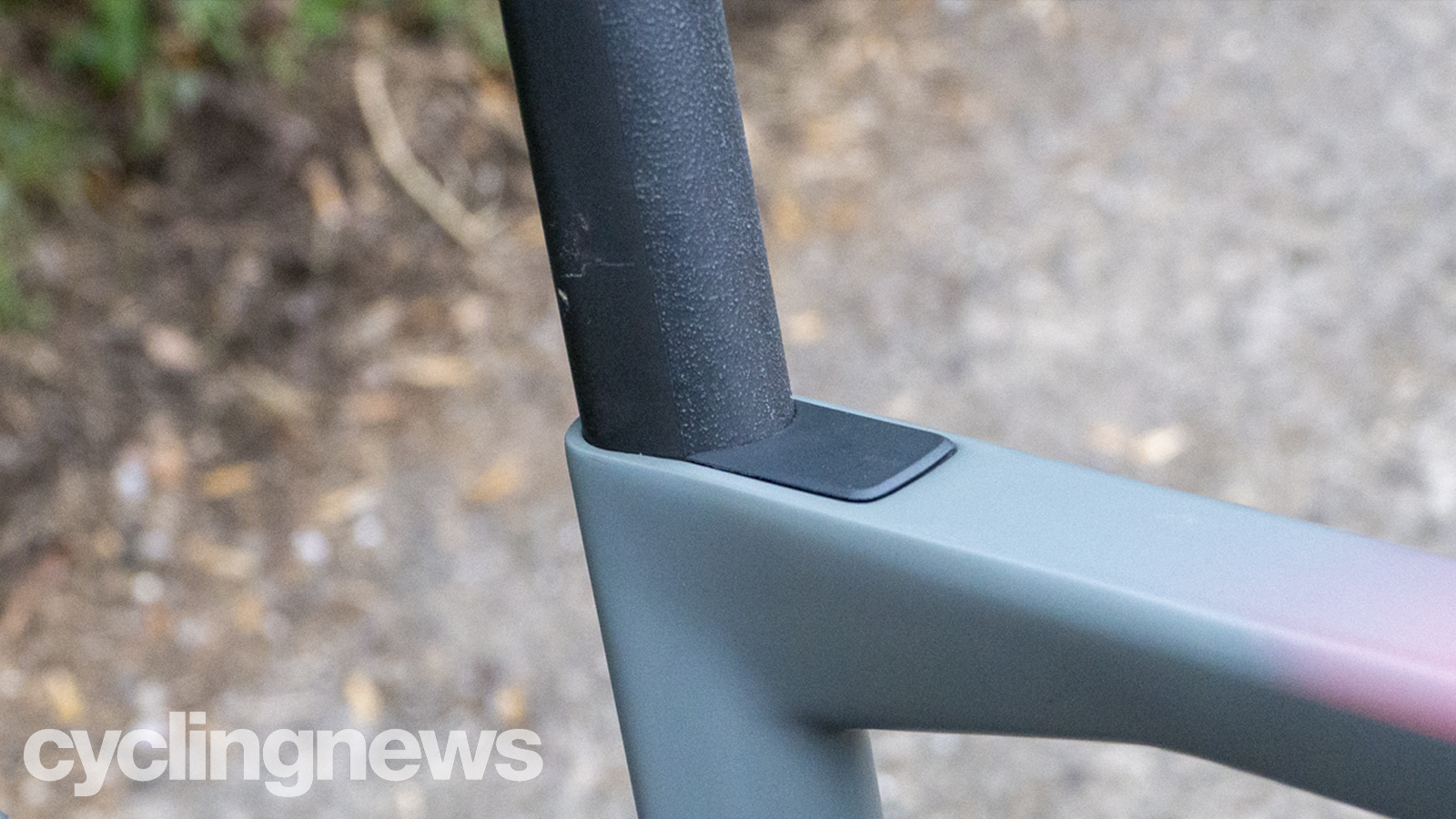
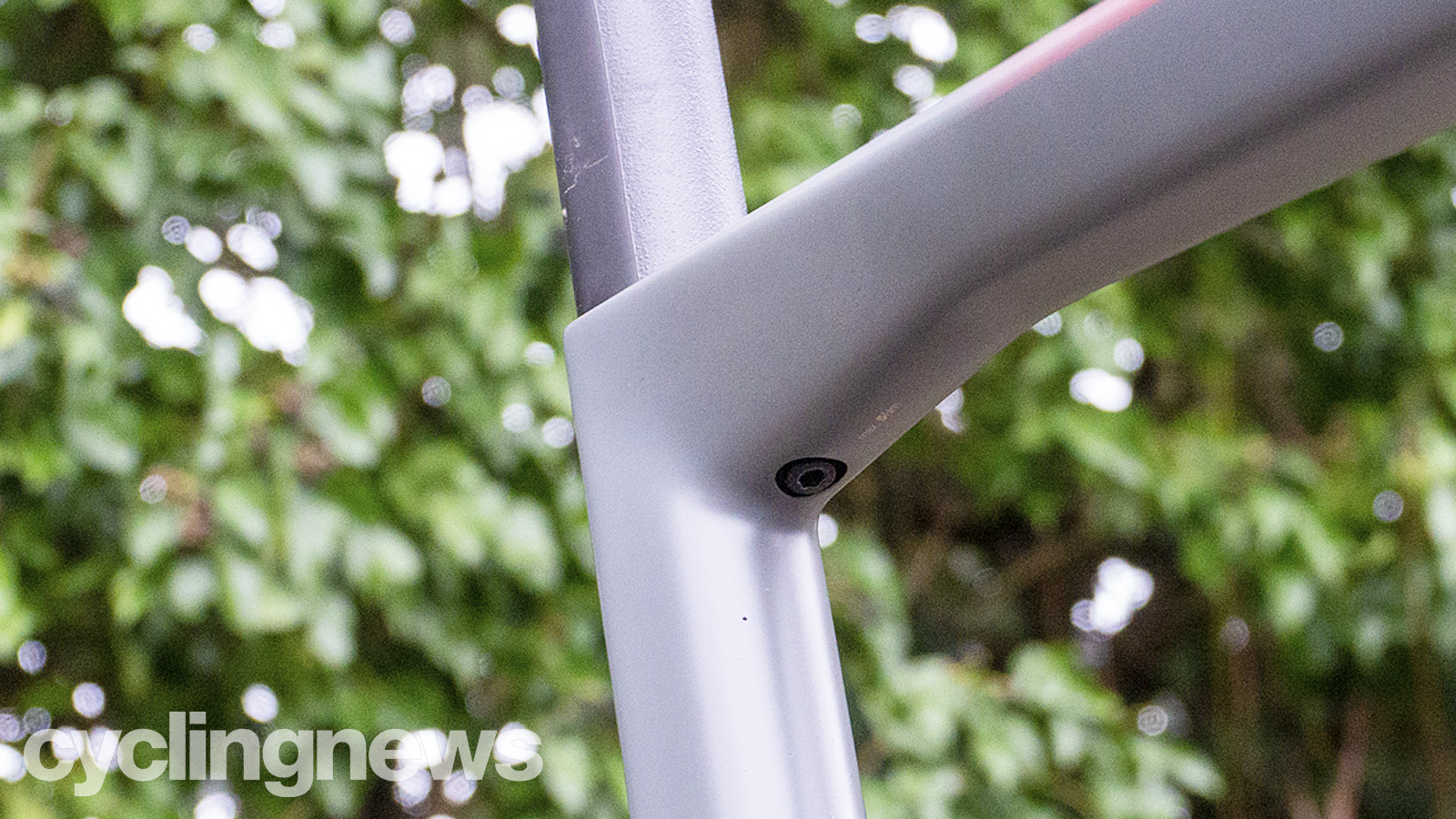
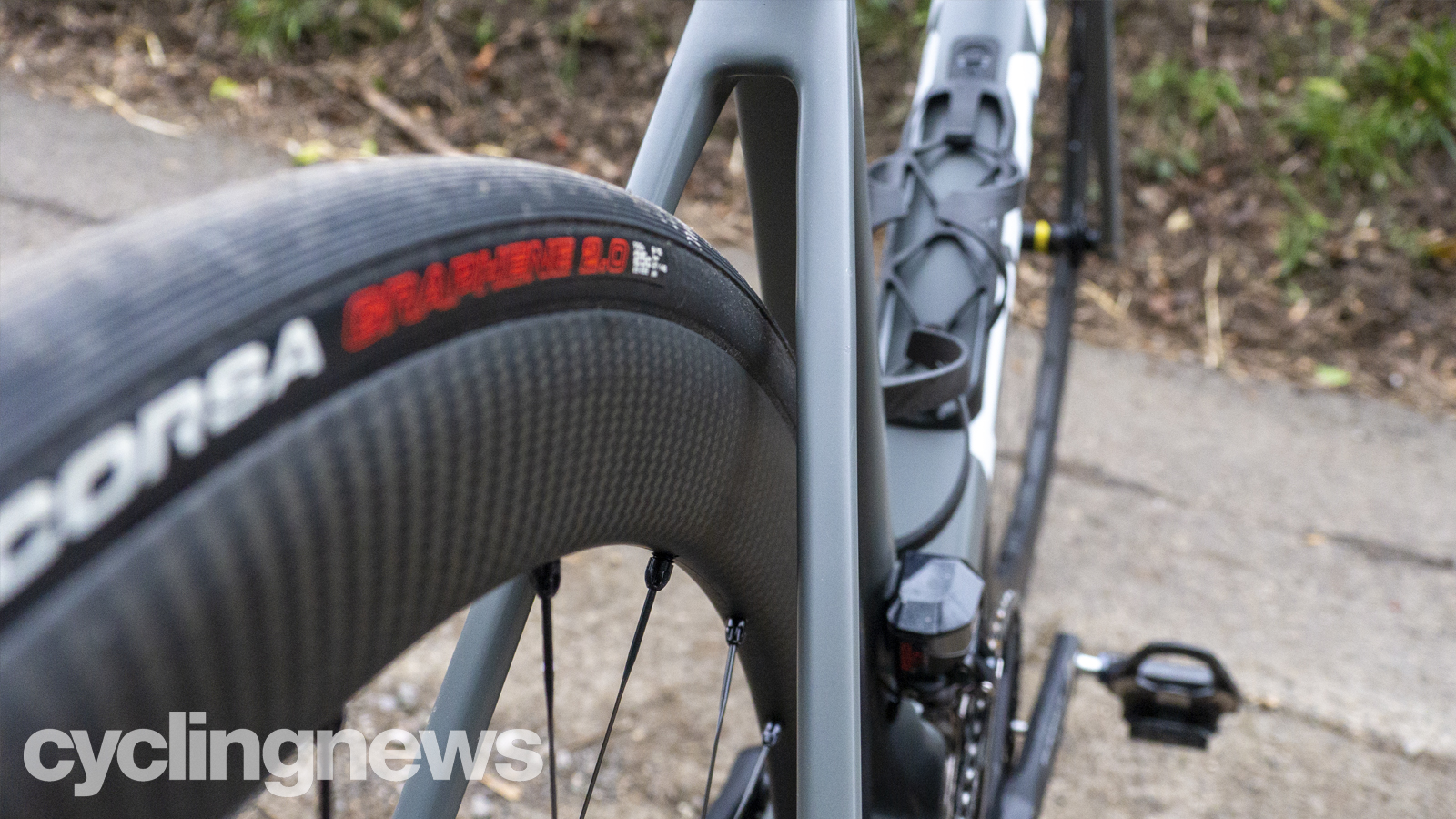
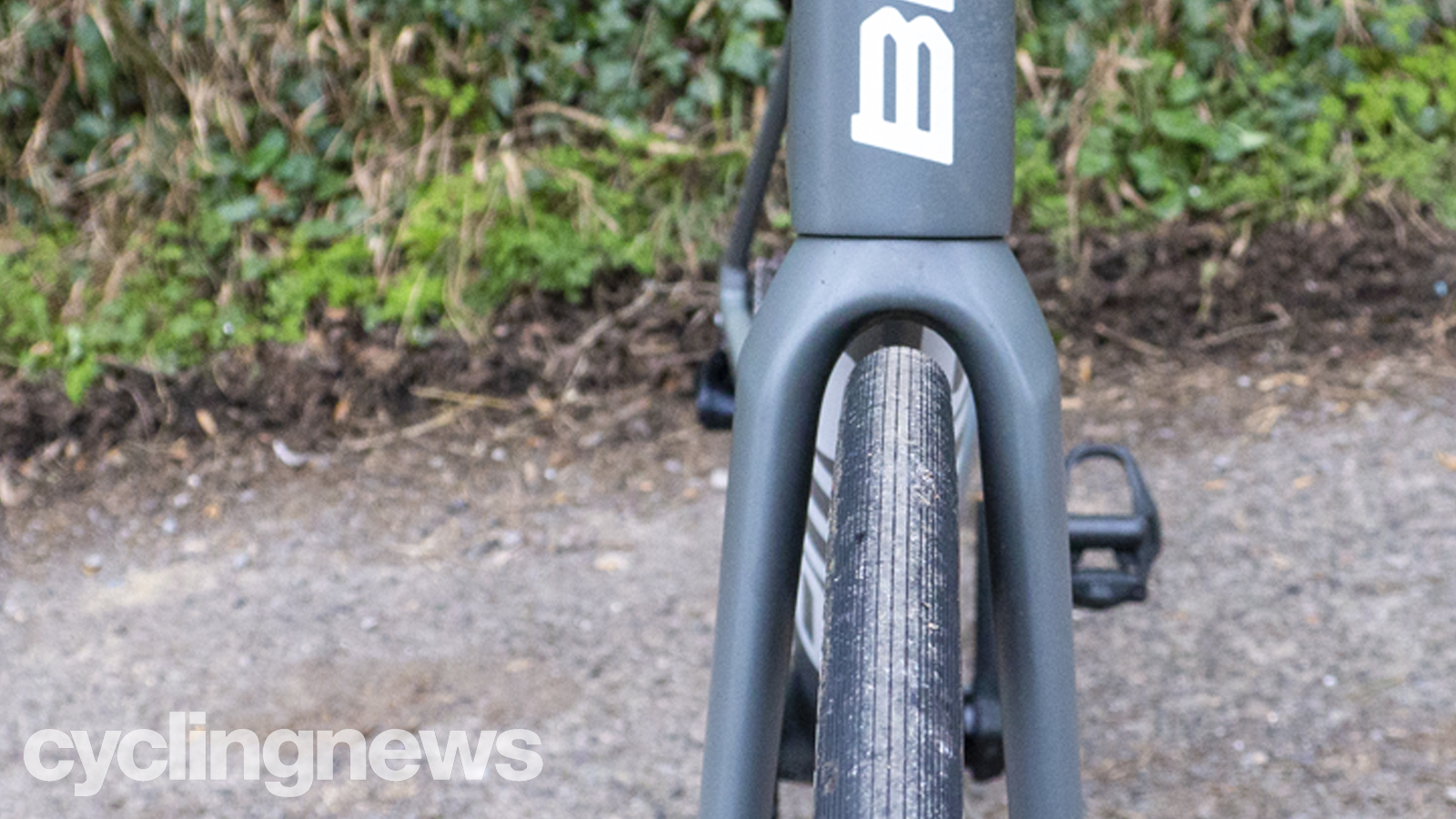
Power transfer like this doesn't just happen by accident on a bike that weighs around 7kg. BMC increased the diameter of the down tube, giving it a larger surface area, but fewer edges to improve aerodynamics while retaining stiffness, and then at its base, engineers widened the bottom bracket area to increase stiffness and improve power transfer. In BMC's testing, it found this resulted in a rear triangle that was 20 per cent stiffer than the former model, with an overall stiffness increase of four per cent.
To complement these gains, BMC also says the new ICS Carbon cockpit is stiffer than the former ICS system, yet with its one-piece construction, is 105 grams lighter. For me, the result is a really smooth blend of precise sharpness, without being overly stiff. For example, the cockpit of the S-Works Tarmac SL7 is more rigid, but the handling of the Teammachine is more precise, as it successfully soaks up a little more of the road's imperfections without numbing directional input.
When it comes to geometry, the Teammachine SLR retains the same tried-and-tested stack and reach figures of the old model. In comparison to the competition, these are reasonably middling in the aggressiveness stakes, however, the standard fitment of a -12.5-degree stem angle does push that front end down a little.
Specifications
Among its rather confusing nomenclature, the Teammachine SLR is available in two base levels.
The Teammachine SLR01, which we have here, is the top-tier model given BMC's 01 carbon fibre modulus, the one-piece ICS Carbon cockpit, and an electronic drivetrain.
Meanwhile, the Teammachine SLR (note the lack of '01') is the more budget friendly choice with BMC's less-premium SLR carbon fibre modulus. It's given the exact same form and tube shapes, but it gains a few grams, as well as the cheaper - but more adjustable - two-piece ICS2 cockpit.
Beyond this, there are also aluminium versions that are available with disk and rim brakes, but throughout the carbon fibre range, the Teammachine is committed to disc brakes.
From here, the spec levels are then specified by a numerical suffix. This, being the Teammachine SLR01 'Two', is given Shimano's Dura-Ace Di2 groupset and Mavic Cosmic SLR 45 wheels, only bested by the Teammachine SLR01 'One' which gets SRAM's eTap AXS wireless groupset and DT-Swiss PRC 1100 wheels.
One notable inclusion is that of Rotor's Aldhu crankset instead of the Dura-Ace R9100 crank that would typically be found on a Dura-Ace-equipped OEM bike. This is no doubt a weight play, as according to claimed weights, Rotor's crank is around 90 grams lighter.
Shifting down to the 36T ring was fine, but going in the opposite direction was occasionally met with a slight laziness. However, it's not the shifting performance that is the main source of disappointment here.
The lack of an included power meter is what grinds my gears the most, and will be particularly offputting to prospective buyers, given the near-£10,000 asking price. If Giant can offer a power meter on a sub-£3.5k TCR, then BMC really ought to be offering one here.
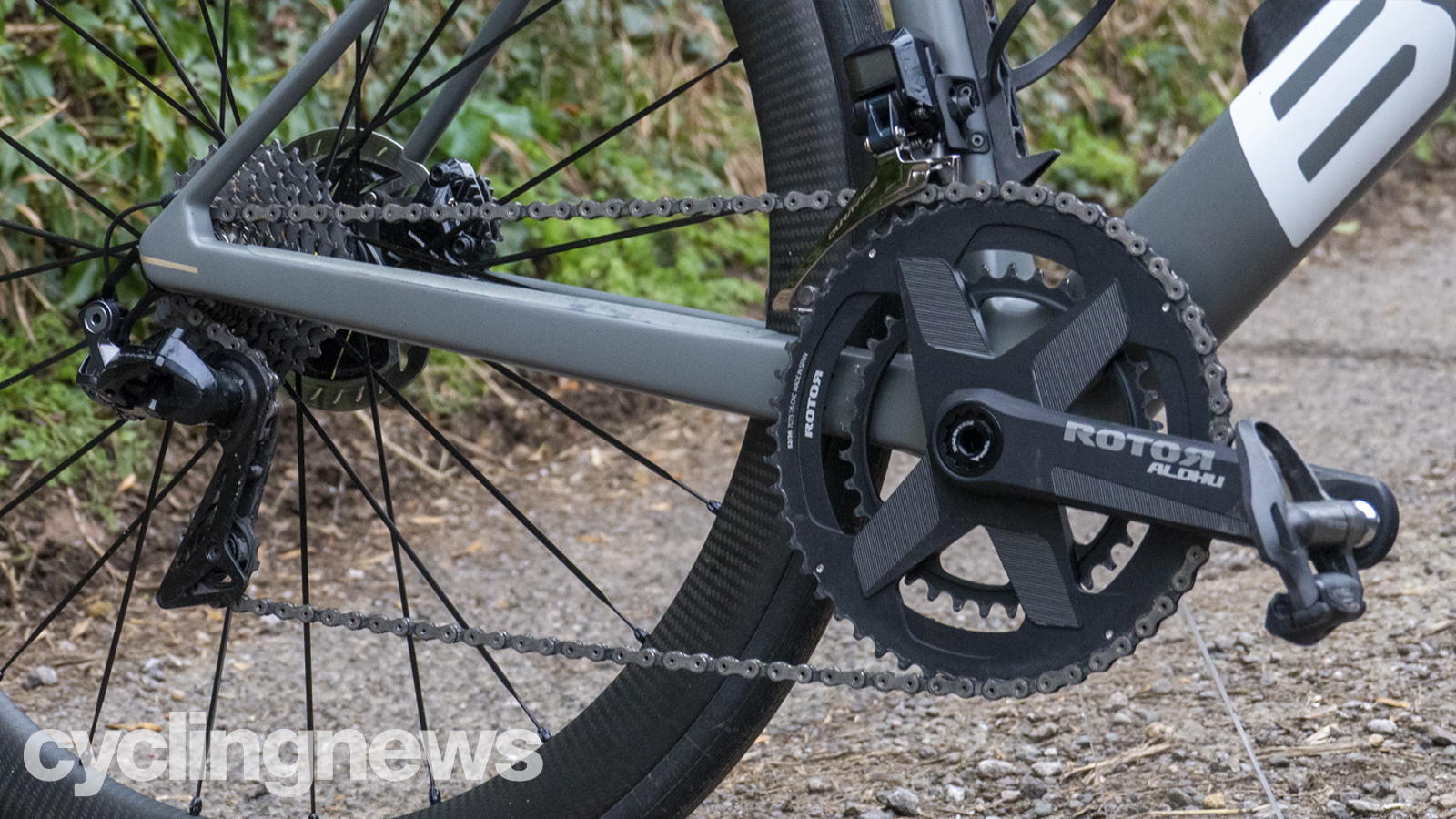
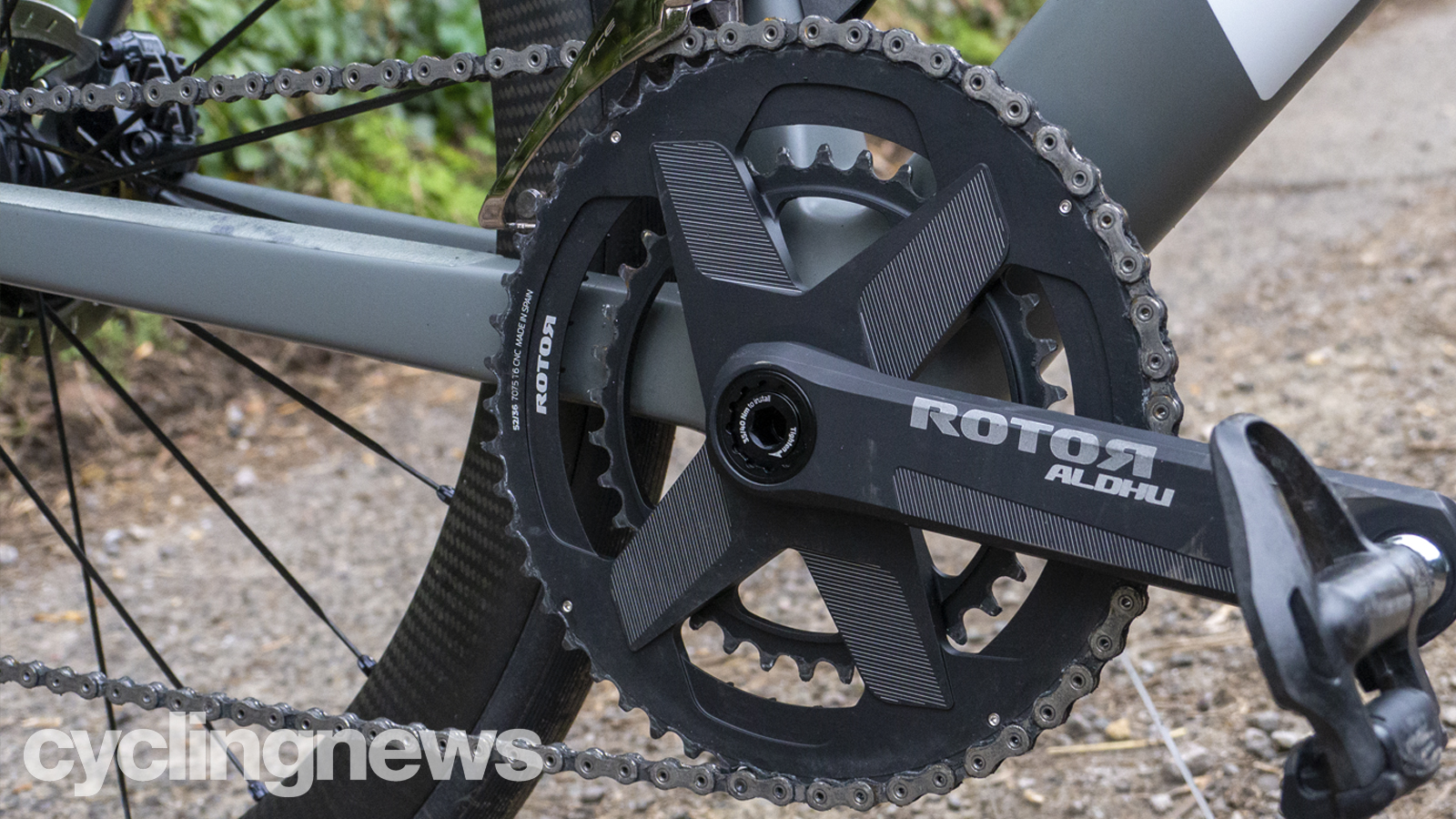
That aside, though, there's no denying the spec level is representative of the price point. The wheelset comes courtesy of Mavic's new blunt-profile Cosmic SLR 45 tubeless-ready rims, wrapped in Vittoria's also-tubeless Corsa TLR tyres.
The saddle is the carbon-rail Flite Boost from Selle Italia, which despite not being a comfortable match for this writer, is a top-tier saddle reviewed well by many.
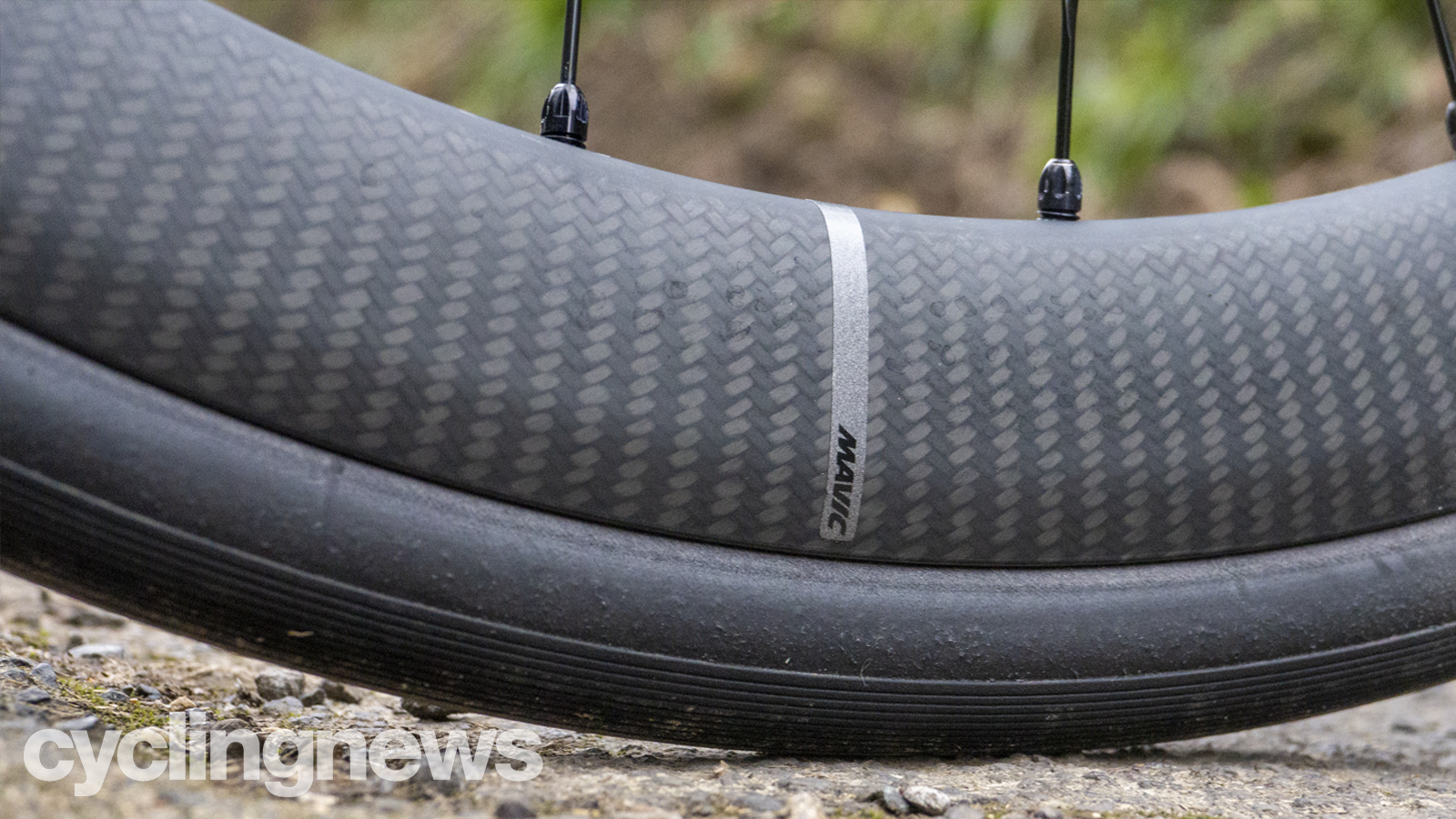
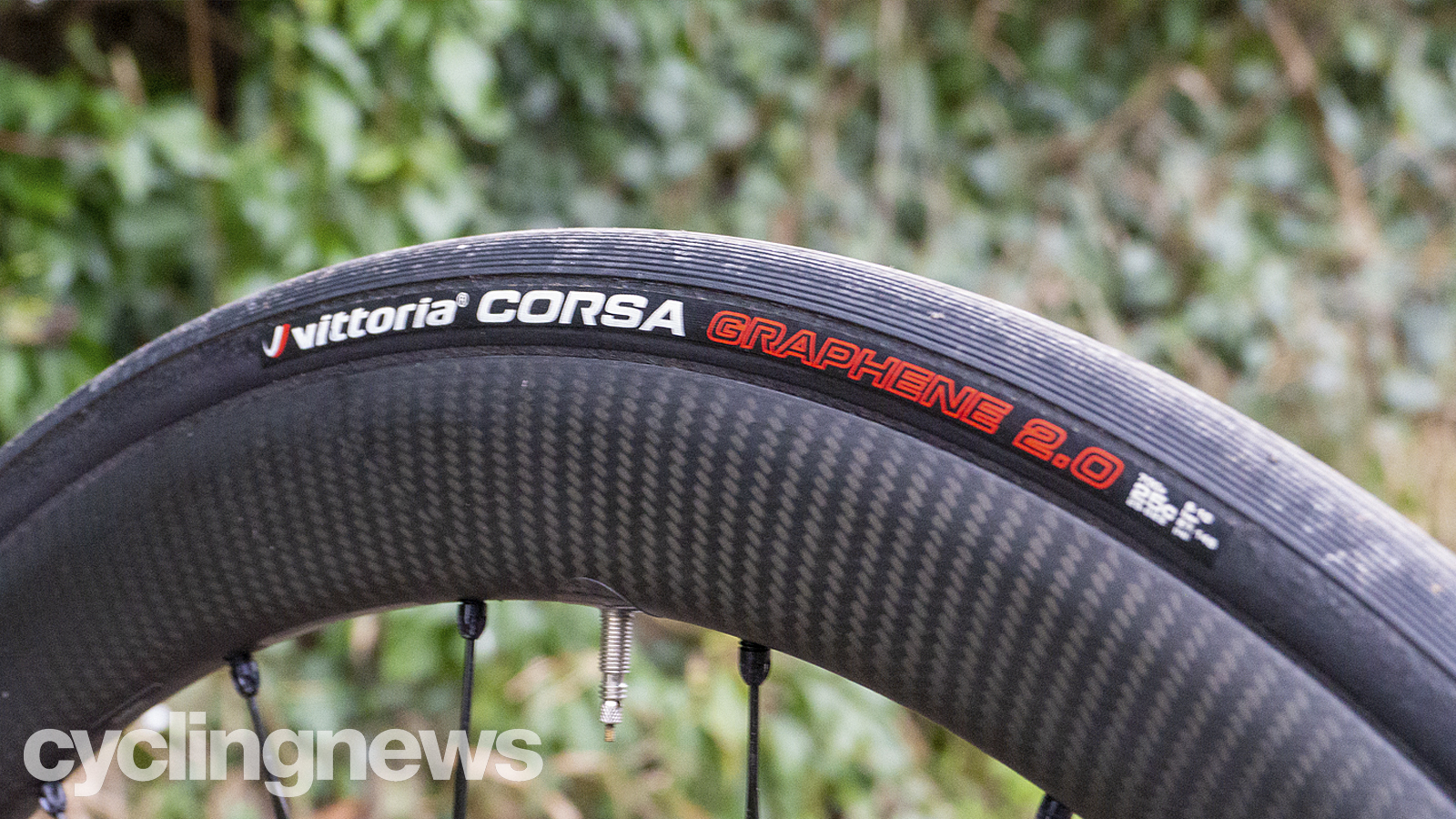
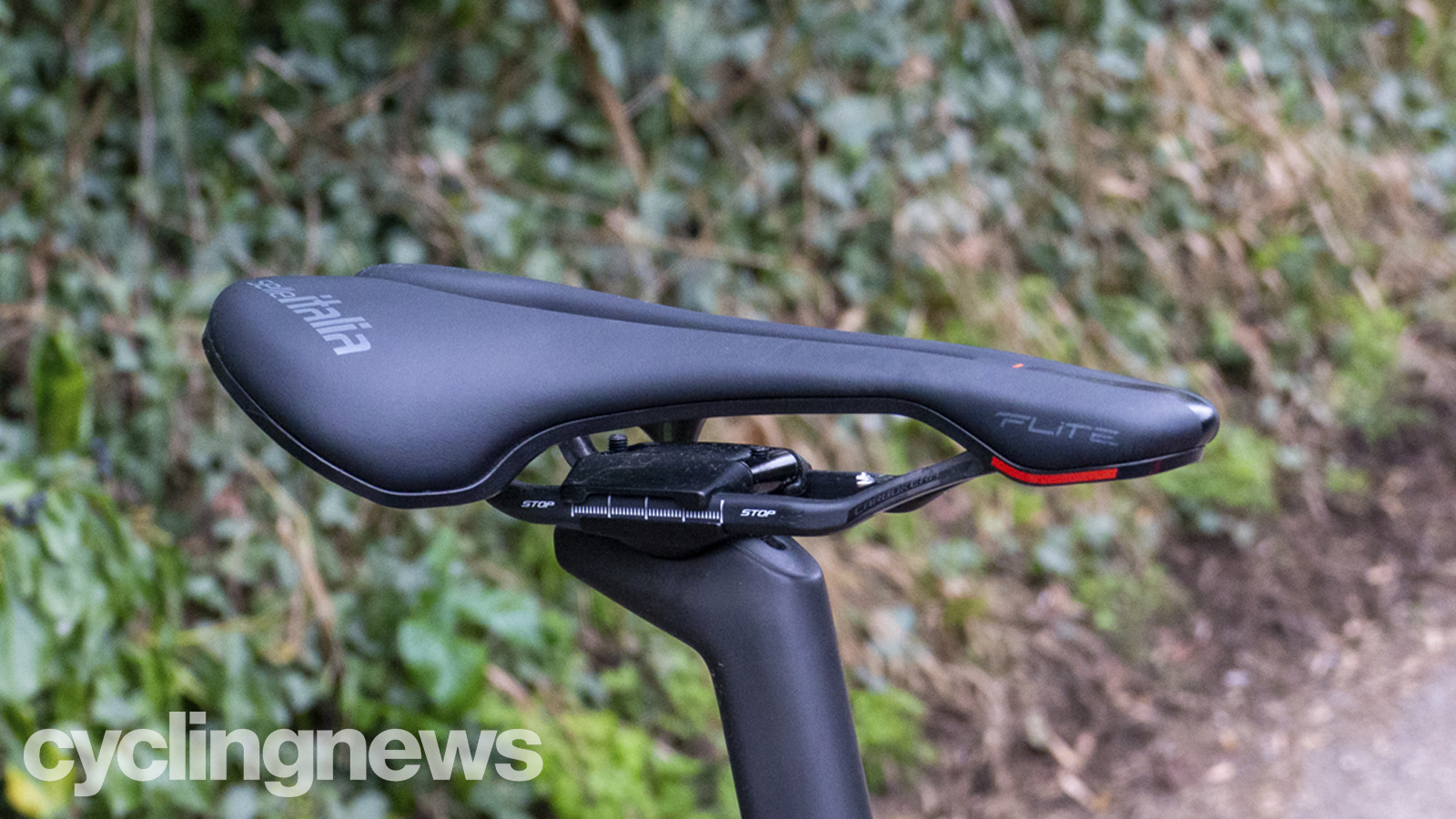
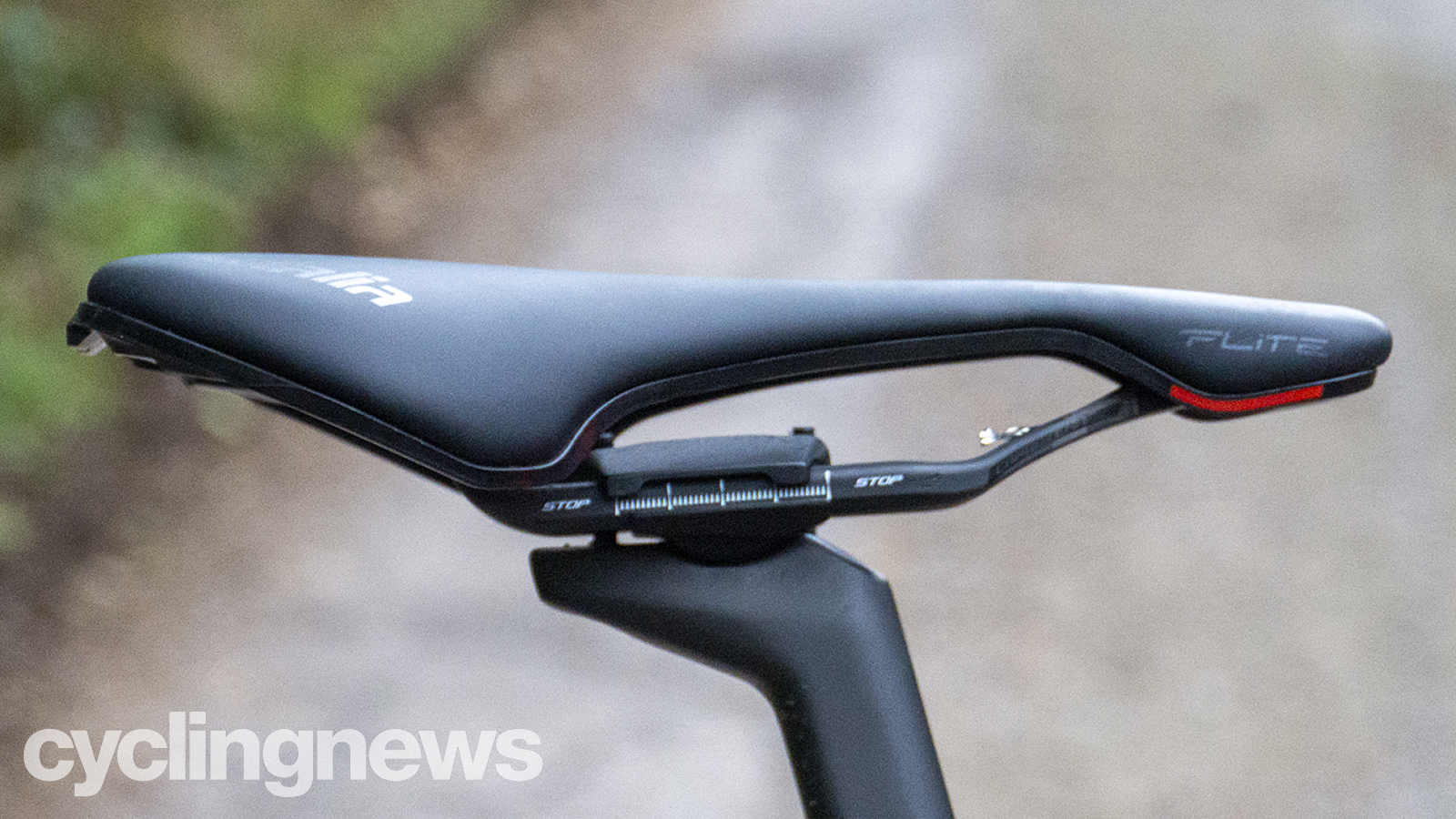
Ride
In our Continental GP5000 review, our tester Guy Kesteven explained that despite the tyre being one of the fastest on the market, the ultra-surefooted and vibration-quelling performance actually gave a perception of the opposite. That very same paradigm seems to be at play here, as the Teammachine SLR01 Two feels ultra-surefooted, easy, and in all honesty, slow.
It doesn't have the same warp-speed perception as others, but data from all of my test loops suggest it's just as rapid over all sorts of Parcours.
This is likely due to a number of factors. Firstly, the fit on the Teammachine is set up with around 20mm more stack than I'm used to, putting me in a more upright position. Secondly, the cockpit. The one-piece system has a little more vertical flex than other handlebars I've used recently, however as I mentioned earlier, none of this flex affects the sharpness of the handling. And thirdly, the wheelbase of the Teammachine is one of the longest in its class, at 9, 10 and 23mm longer than the Tarmac, Supersix Evo and Emonda, respectively.
At 7.2kg, it was far from a surprise that the Teammachine SLR surged forward with eagerness at every opportunity when the road pointed up, but more reassuringly, this desperation to lead the way continued over flatter terrain too. Its low weight and stiff bottom bracket helped my watts quickly become momentum, before the frame's aero overhaul, combines with Mavic's blunt-profile wheels and bladed spokes helped keep speeds high.
Verdict
The BMC Teammachine SLR01 Two seems to have converged the best of both lightweight and aerodynamic worlds into a package that simply begs to be raced. Unfortunately, my testing of the bike during the COVID-19 era meant the Teammachine didn't get its wish to be ridden in anger in a peloton or criterium, but it sure as heck proved capable.
We might have had a little joke when the press release came through with all the new bike buzzwords included, but it seems the joke's on us because the Teammachine SLR01 is a truly premium bike that's a thorough joy to ride over all manner of gradient. It's fast and responsive while being comfortable and compliant, and we just wish we had the chance to pin a number on while we were testing it.
What's more, even at the eyewatering price tag of $10,999, you'll still have $2,001 left to invest in the power meter you forewent when you chose not to buy the S-Works Tarmac SL7.
- Trek Emonda SLR review
- Specialized S-Works Tarmac SL7 review
- Giant TCR Advanced SL0 review
- Scott Addict RC15 review
Logbook: BMC Teammachine SLR01 Two
- Time: 3 months
- Mileage: ~1,000km
- Punctures: 0
- Ride types: Training rides, indoor rides
Tech Specs: BMC Teammachine SLR01 Two
- Price: €10,999 / $10,999
- Frame: BMC Teammachine SLR01
- Size: 58cm
- Weight: 7.2kg (actual)
- Groupset: Shimano Dura-Ace Di2 R9170
- Crankset: Rotor Aldhu 52/36
- Wheels: Mavic Cosmic SLR 45
- Brakes: Shimano Dura-Ace disc R9120
- Handlebar: BMC ICS Carbon
- Stem: BMC ICS Carbon
- Seatpost: BMC Teammachine 01 Premium
- Saddle: Selle Italia Flite Boost Carbon
- Tyres: Vittoria Corsa, 25mm

Josh is Associate Editor of Cyclingnews – leading our content on the best bikes, kit and the latest breaking tech stories from the pro peloton. He has been with us since the summer of 2019 and throughout that time he's covered everything from buyer's guides and deals to the latest tech news and reviews.
On the bike, Josh has been riding and racing for over 15 years. He started out racing cross country in his teens back when 26-inch wheels and triple chainsets were still mainstream, but he found favour in road racing in his early 20s, racing at a local and national level for Somerset-based Team Tor 2000. These days he rides indoors for convenience and fitness, and outdoors for fun on road, gravel, 'cross and cross-country bikes, the latter usually with his two dogs in tow.

